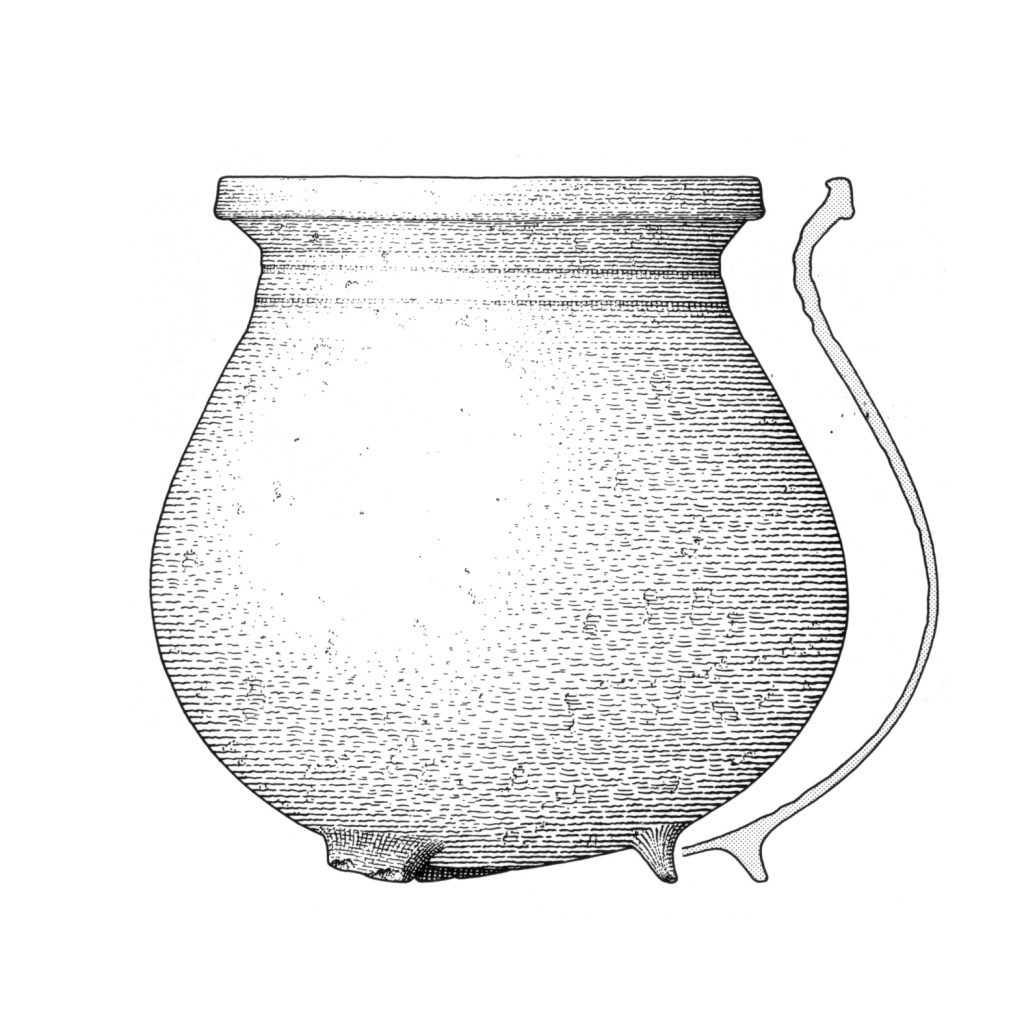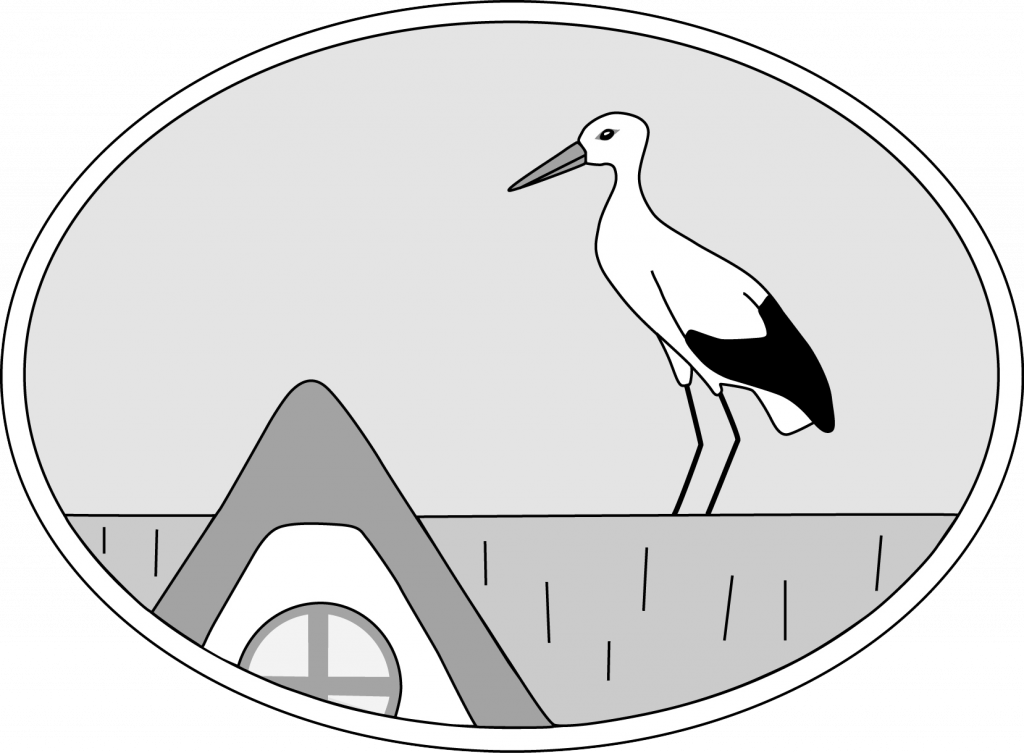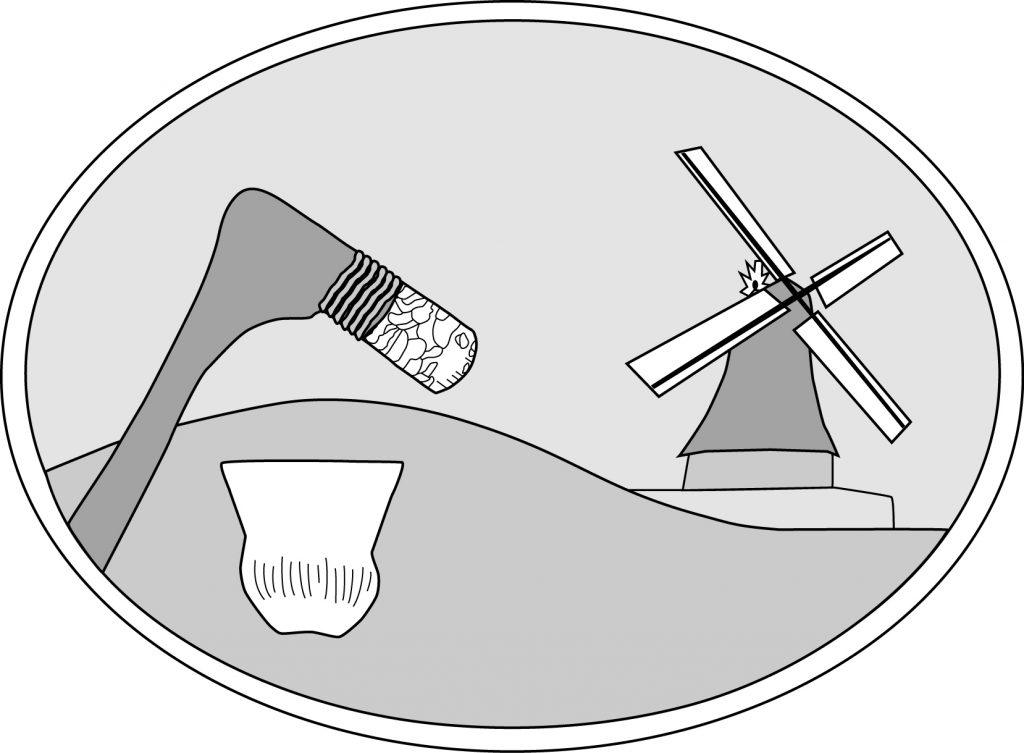
The medieval village of Treenstade was originally located on sandy dunes in the Treenemarsch. One advantage of this location was its proximity to the river for transport purposes, among other things. However, as flooding became increasingly common and the disadvantages began to outweigh the advantages, the inhabitants eventually moved to the Geest and founded the village of Wohlde. This probably happened after Saint Marcellus’s flood (the great Manndränke) of January 16, 1362, from which all of Stapelholm suffered greatly.
There were repeated medieval finds made here during sand quarrying and field surveys. Such finds included wooden posts and oak planks, burnt clay, a door hinge, an iron lance tip, a round grindstone, animal bones and pottery shards. These come from spherical pots, bowls with collar-like rims, and cauldrons (in german called “Grapen“) and such like. The latter are bulbous cooking pots with three legs. These made it possible to place the pot directly in the embers of an open fire for cooking. The form was commonly known as “Jüte-” or “Suurpott” in northern Schleswig-Holstein until the 19th century, especially for cooking and storing “Schwarzsauer” (directly translated as “black-sour”: pieces of pork cooked in pigs’ blood and vinegar) and other sour meat dishes (hence the name Suurpott = sour pot).
According to the episcopal register of the time, Treenstade was a prosperous settlement, already boasting windmills. It is told that by moving to the Geest the farmers became ducal subjects, much to the chagrin of the bishop.



